XRF test results for Portmeirion highball glass with “Sweet Pea” floral design — sent in by Shelly in California
For those new to this website:
Tamara Rubin is a multiple-Federal-award-winning independent advocate for childhood Lead-poisoning prevention and consumer goods safety, and a documentary filmmaker. She is also a mother of Lead-poisoned children (two of her sons were acutely Lead-poisoned in 2005). Since 2009, Tamara has been using XRF technology (a scientific method used by the U.S. Consumer Product Safety Commission) to test consumer goods for toxicants (specifically heavy metals — including Lead, Cadmium, Mercury, Antimony, and Arsenic). All test results reported on this website are science-based, accurate, and replicable. Items are tested multiple times to confirm the test results for each component tested. Tamara’s work was featured in Consumer Reports Magazine in February of 2023 (March 2023 print edition).
Published: July 18, 2023 — Tuesday
Below are full XRF test results for the Portmeirion Sweet Pea floral design highball glass pictured above (additional photos below as well).
For context: any level under 90 ppm Lead in the paint or coating of an item is considered safe by all standards (including the safety standards set for items intended for use by children). The strictest safety standard for total Cadmium content (also for items intended for use by children) is a limit of 40 ppm Cadmium. In one or more tested components, this glass fell outside of these safety standards. Because glassware is not considered to be an item “intended for use by children” (even though children do use glassware) the toxicant levels found in this glass are not illegal in any way.
Reading #1) Unpainted section of the glass
60-second test (repeated multiple times to confirm results)
- Lead (Pb): non-detect / negative
- Cadmium (Cd): 8 +/- 4 ppm
- Tin (Sn): non-detect / negative
- Mercury (Hg): non-detect / negative
- Selenium (Se): non-detect / negative
- Barium (Ba): 1,072 +/- 40 ppm
- Arsenic (As): non-detect / negative
- Chromium (Cr): 706 +/- 272 ppm
- Antimony (Sb): non-detect / negative
- Nickel (Ni): non-detect / negative
- Copper (Cu): non-detect / negative
- Zinc (Zn): 4,404 +/- 120 ppm
- Manganese (Mn): non-detect / negative
- Titanium (Ti): non-detect / negative
- Zirconium (Zr): 652 +/- 18 ppm
- Niobium (Nb): non-detect / negative
- Molybdenum (Mo): non-detect / negative
- Iron (Fe): 374 +/- 96 ppm
- Platinum (Pt): 89 +/- 39 ppm
- Cobalt (Co): non-detect / negative
- Bismuth (Bi): non-detect / negative
- Indium (In): non-detect / negative
- Chlorine (Cl): non-detect / negative
- No other metals were detected in consumer goods mode.
Reading #2) Section of the glass with purple paint
60-second test (repeated multiple times to confirm results)
- Lead (Pb): 158 +/- 22 ppm
- Cadmium (Cd): 51 +/- 9 ppm
- Tin (Sn): 359 +/- 21 ppm
- Mercury (Hg): non-detect / negative
- Selenium (Se): non-detect / negative
- Barium (Ba): 939 +/- 61 ppm
- Arsenic (As): non-detect / negative
- Chromium (Cr): 8,716 +/- 559 ppm
- Antimony (Sb): 37 +/- 17 ppm
- Nickel (Ni): non-detect / negative
- Copper (Cu): 1,077 +/- 77 ppm
- Zinc (Zn): 56,800 +/- 1,400 ppm
- Manganese (Mn): 811 +/- 230 ppm
- Titanium (Ti): 30,500 +/- 1,800 ppm
- Zirconium (Zr): 2,272 +/- 72 ppm
- Niobium (Nb): 735 +/- 33 ppm
- Molybdenum (Mo): 634 +/- 39 ppm
- Iron (Fe): 521+/- 121 ppm
- Platinum (Pt): non-detect / negative
- Cobalt (Co): 7,833 +/- 289 ppm
- Bismuth (Bi): non-detect / negative
- Indium (In): 25 +/- 10 ppm
- Chlorine (Cl): non-detect / negative
- No other metals were detected in consumer goods mode.
Reading #3) Section of the glass with green paint
60-second test (repeated multiple times to confirm results)
- Lead (Pb): 32 +/- 14 ppm
- Cadmium (Cd): 632 +/- 28 ppm
- Tin (Sn): 45 +/- 12 ppm
- Mercury (Hg): non-detect / negative
- Selenium (Se): non-detect / negative
- Barium (Ba): 960 +/- 60 ppm
- Arsenic (As): non-detect / negative
- Chromium (Cr): 14,300 +/- 700 ppm
- Antimony (Sb): non-detect / negative
- Nickel (Ni): non-detect / negative
- Copper (Cu): 2,249 +/- 112 ppm
- Zinc (Zn): 54,000 +/- 1,300 ppm
- Manganese (Mn): 1,785 +/- 284 ppm
- Titanium (Ti): 22,500 +/- 1,600 ppm
- Zirconium (Zr): 1,679 +/- 55 ppm
- Niobium (Nb): 630 +/- 30 ppm
- Molybdenum (Mo): 545 +/- 36 ppm
- Iron (Fe): 414 +/- 122 ppm
- Platinum (Pt): non-detect / negative
- Cobalt (Co): 2,703 +/- 156 ppm
- Bismuth (Bi): non-detect / negative
- Indium (In): 34 +/- 10 ppm
- Chlorine (Cl): non-detect / negative
- No other metals were detected in consumer goods mode
Other colors of paint on this glass tested similarly.
Some additional reading that may be of interest
- The concern for Lead in vintage decorated glassware
- More Portmeirion products we have tested
- More decorated glassware we have tested
- A link to the “Menu” of this website
~ End ~
Never Miss an Important Article Again!
Join our Email List









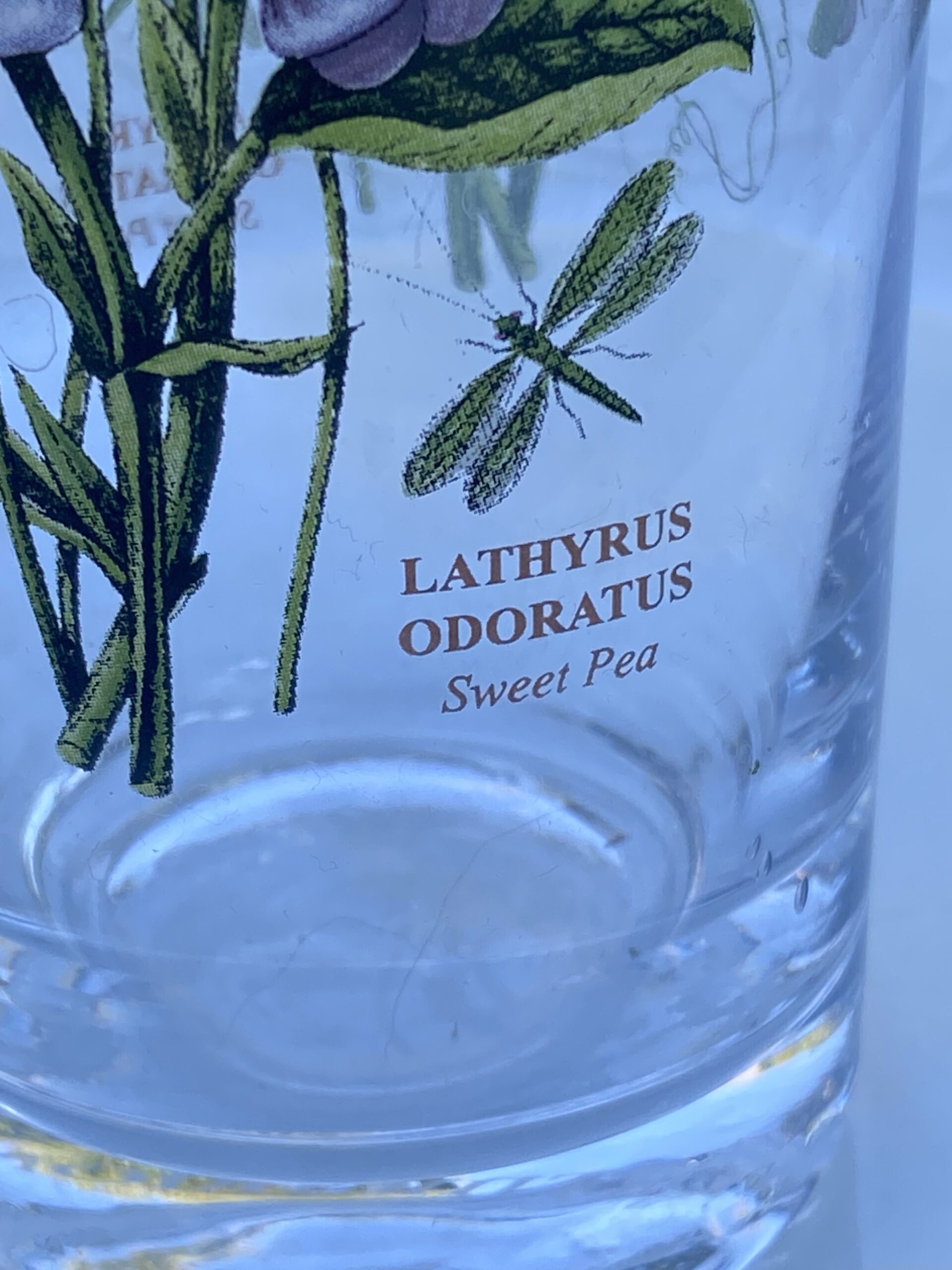

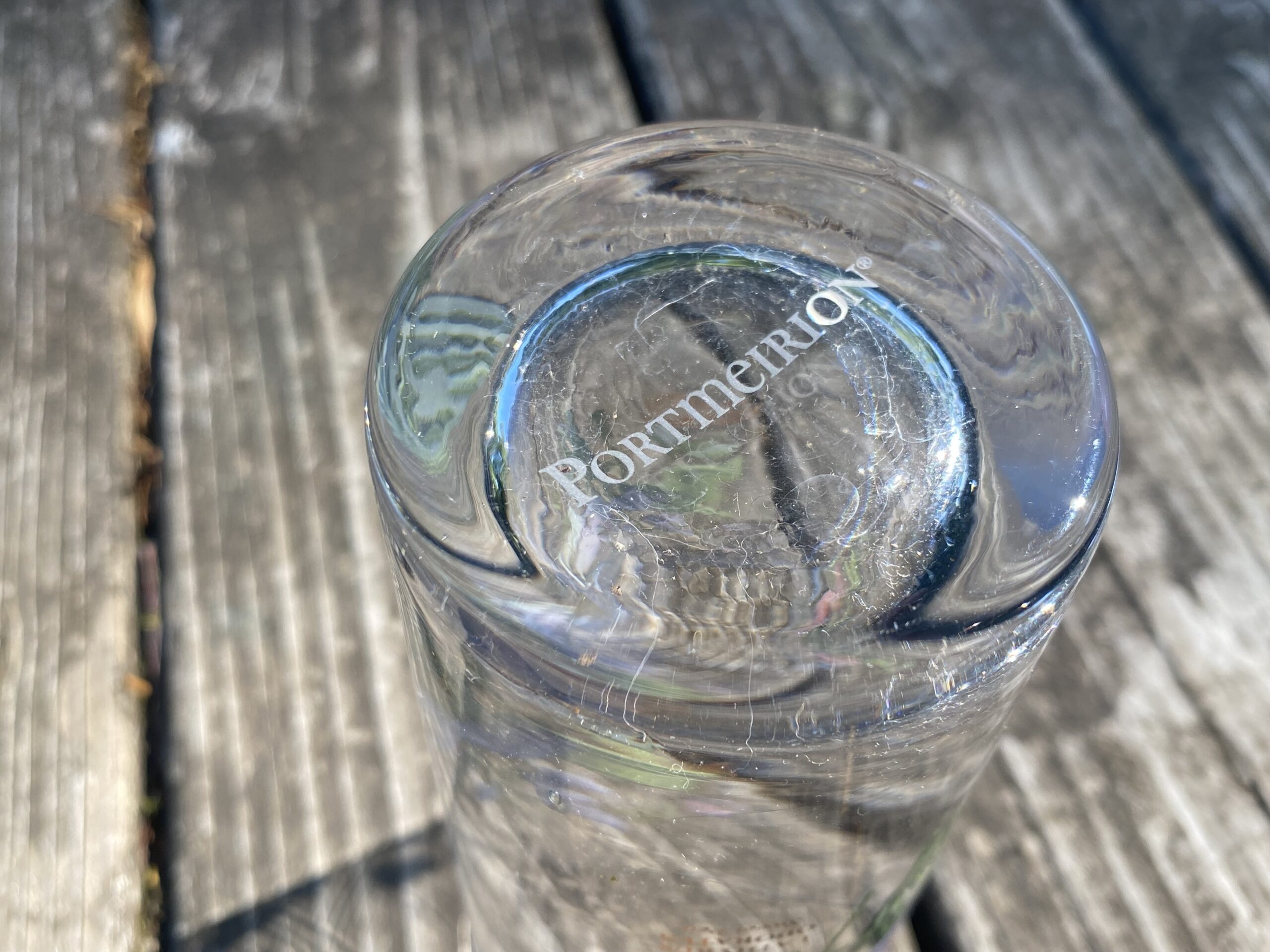
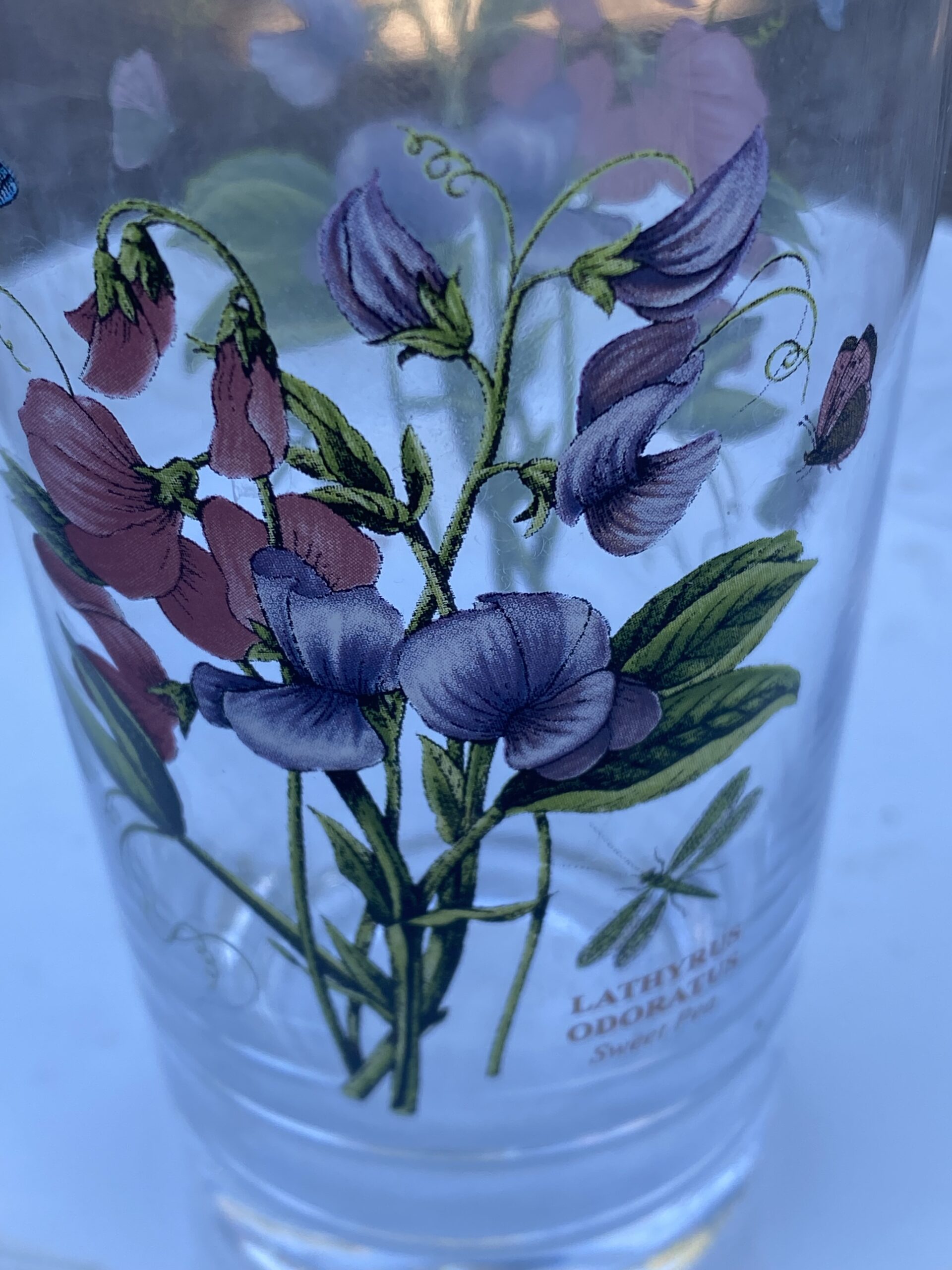
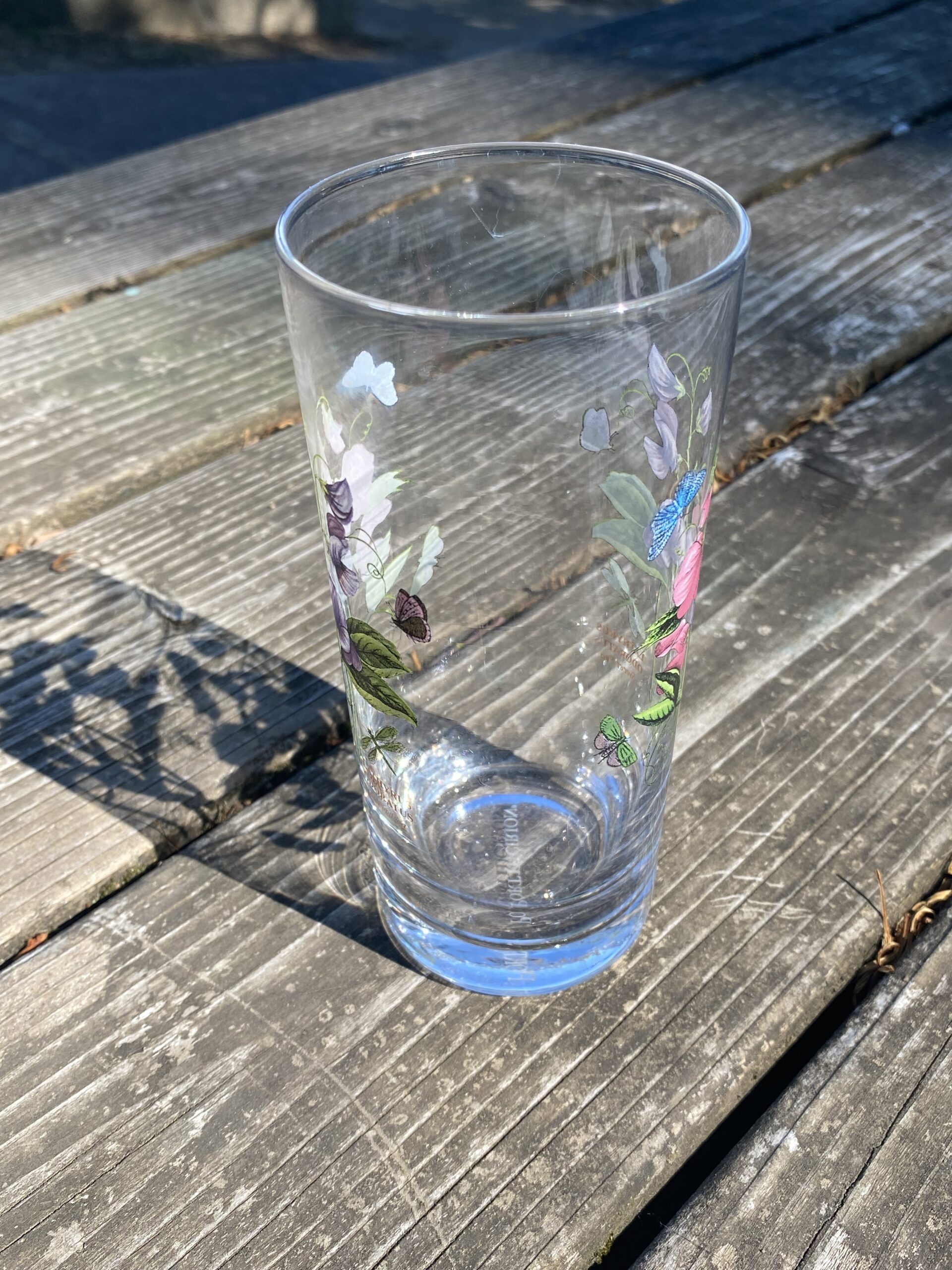
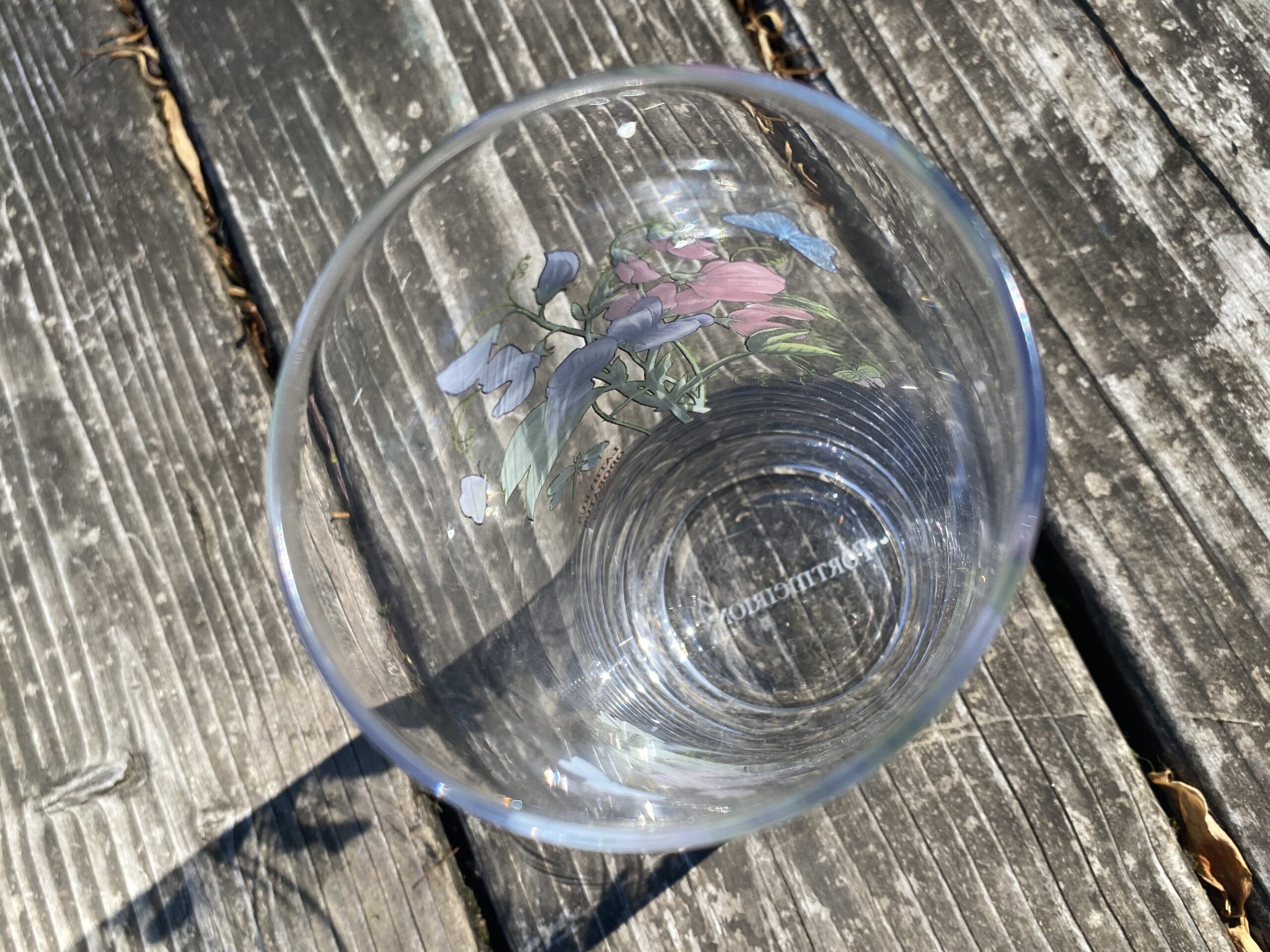
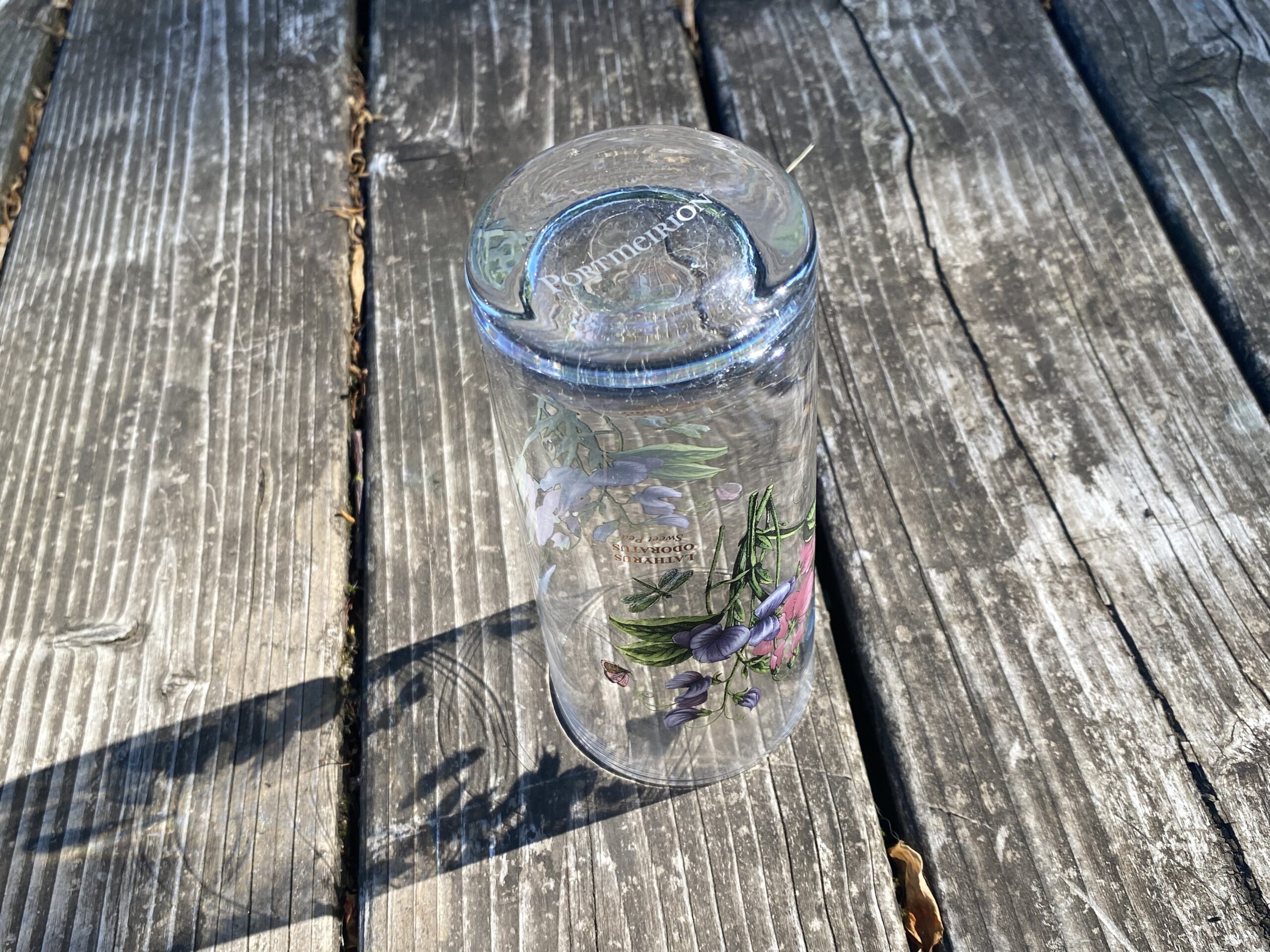

Hi Tamara, What’s the bottom line on these glasses? Does the cobalt, cadmium and antimony make them unsafe to use? Thanks, Shelly
Hi Tamara,
Do you have any links or articles addressing the safety of cobalt, cadmium and antimony?